The Alexander family, Ballyboley Dexters 1/3
Tell us about your farm, its location, size, altitude, climate, soils, enterprises, organic/PfL/other status
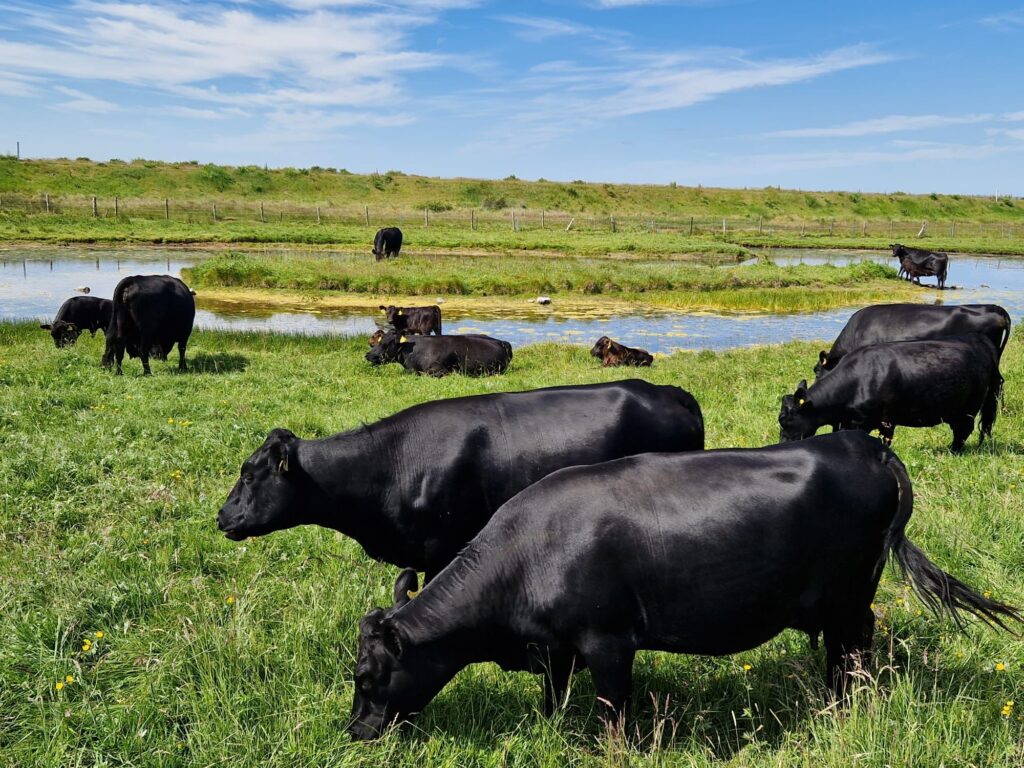
The farm's Pedigree Dexter Cattle
We are a family-run farm focused on breeding Pedigree Dexter Cattle, with a recent introduction of three Belted Galloways. We are Pasture for Life Certified and our cattle are kept outside all year round. They are grazed on a natural diet of purely pasture, which produces healthy animals and high quality pasture-fed beef which is sold locally under the brand of Ballyboley Dexters. We are interested in sustainable, regenerative agriculture that is of high value to people and nature. We have had green infrastructure surveys carried out across our farms with the hope to maximise future opportunities to improve hedges, trees, ditches, water quality and pasture for cattle and wildlife.
We sit on the steering group of the Northern Irish Nature Friendly Farming Network and are members of our local Northern Ireland Dexter Cattle Society and the Growing Innovation Network, a network of farmers who believe that agriculture can lead the way in tackling the food, climate, nature and health crisis.
We farm in Co. Down, Northern Ireland on two main out-farms which are 10 miles apart. One is located on the shores of Strangford Lough at Greyabbey and the other is owned by the National Trust at Orlock Point, just outside the city of Bangor. We also carry out conservation grazing on some smaller National Trust sites along the Ards Peninsula. Our farm management plans are focussed on protecting the coastline as well as regenerating the farmland. Both farms are run in a regenerative farm system without the use of pesticides, herbicides or synthetic fertilisers. Using such practices we have personally observed huge improvements in soil health, biodiversity, animal health and the ability to run these farms with minimal inputs.
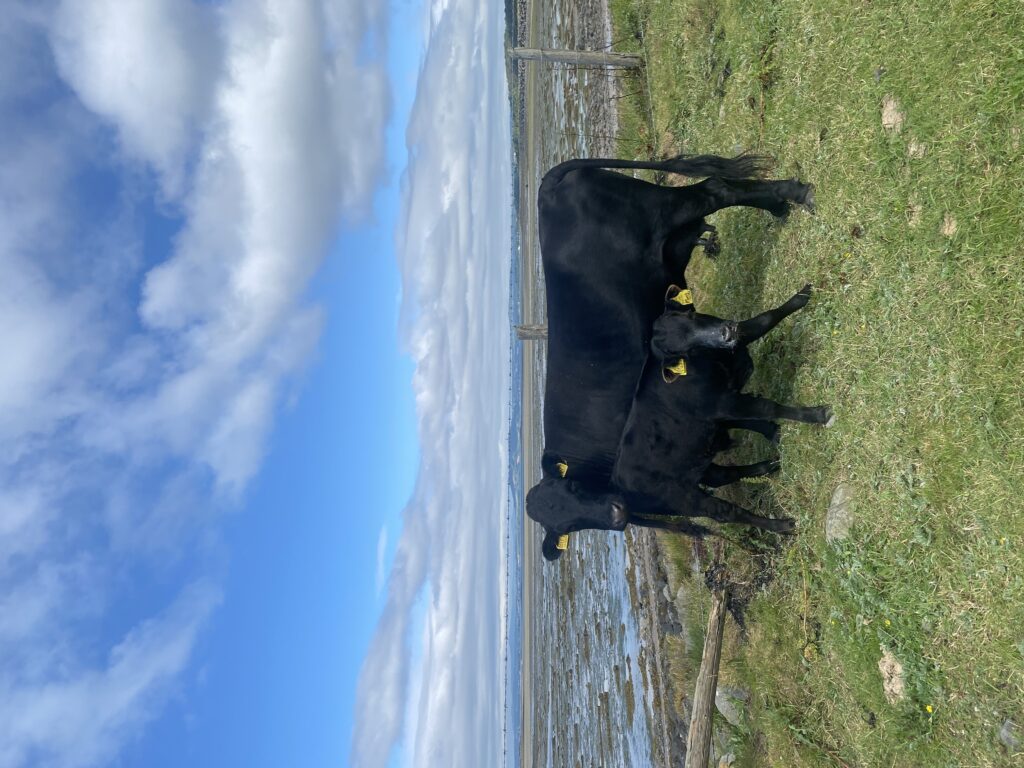
Their cattle grazing at Greyabbey Farm
Greyabbey Farm
We took over stewardship of Greyabbey Farm approximately 8 years ago - a 40-acre site within a designated Area of Special Scientific Interest which is also an Area of Outstanding Natural Beauty. It runs to the shores of Strangford Lough. The ground here is of marginal quality and type, having little topsoil above a sandy subsoil. The winds here are mainly South Easterly bringing a salty, damp air onto the farm. A large piece of this ground is at or below the high tide mark, having been reclaimed from the Lough and a sea defence put in place. Before we took stewardship there had been heavy use of synthetic fertilisers and slurry whilst herbicides had been used extensively for weed control. These intensive practices had poisoned the soil and we were certain that chemicals had leached into the surrounding streams, ponds and shoreline. These practices had depleted the soil life and subsequently its structure along with leaving the waterways fairly devoid of biodiversity.
Orlock Farm
This is a 55 acre National Trust owned farm. We secured the first long-term tenancy agreement with the National Trust here in Northern Ireland in early 2022. Our aims for farming closely align with the aims of the National Trust and our approach to land management is similar. Prior to our tenancy this farm had been under intensive arable management with full use of herbicides, pesticides and synthetic fertilisers for over 30 years. The farm sits on the East Coast of Northern Ireland running to the Irish Sea. It is impacted by winds, especially northerlies and easterlies with record wind speeds of 87mph recorded during Storm Arwen in November 2021. The soil on the farm is of clay loam type. This favourable soil has good nutrient retaining potential, with a reasonable drainage.
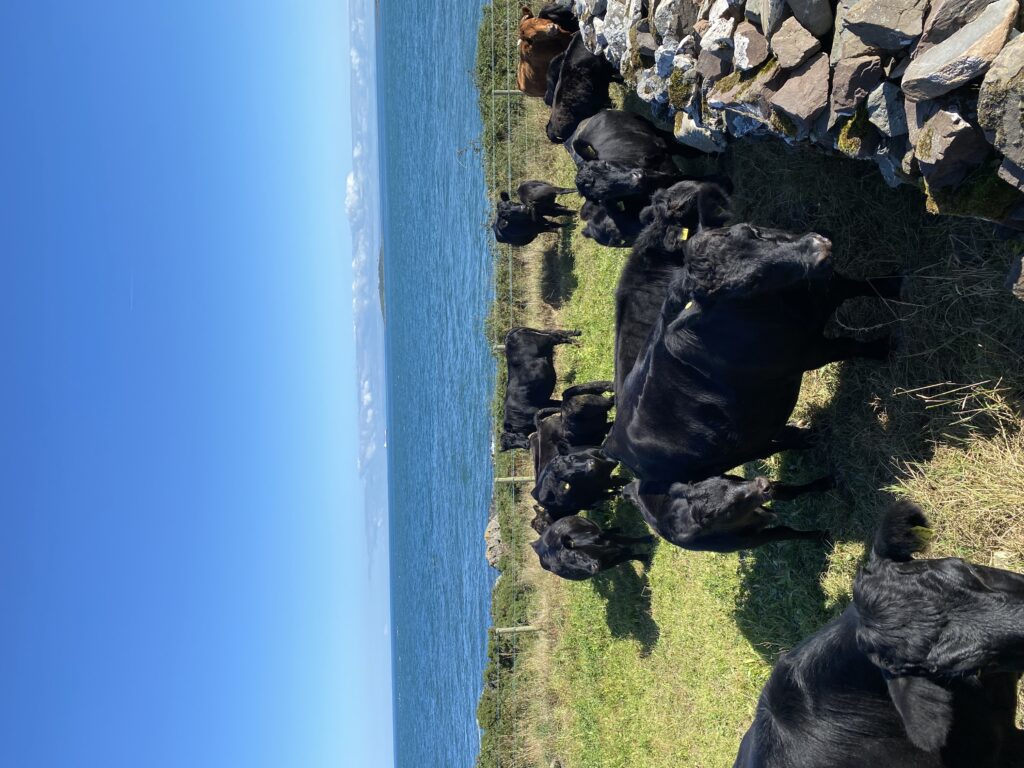
The farm's herd at Orlock Farm
Share with us a general description of the biodiversity on your farm – essentially above ground (but reference to below ground if relevant) – both flora and fauna.
Greyabbey Farm
Our mission was to regenerate the land with the ultimate aim of bringing back biodiversity both above and below the sward and invigorating the ponds and waterways whilst at the same time giving our herd of Dexters a rich and diverse pasture which they could thrive upon. All this was to be carried out on a very limited budget over a long period of time. Our system needed to be sustainable financially with no basic farm payment.
At first we ran our Dexter's with a system fairly heavily stocked in paddocks in an attempt to open up the sward and take control of the weed burden. This worked relatively well. However we had difficulty in controlling the rushes on this low-lying land. We now mulch the rushes when they get ahead of the cattle. These rushes ultimately feed organic material back into the soil. During certain times of the year the cattle feed on them and they enjoy browsing on the seed heads during the month of August.
Over time the sward of native, natural grasses has improved and is now species rich with plant life that is suited to the soil and salt laden air. Approximately 6 years ago we broadcast a simple mixture of red and white clovers over the sward in early spring which quickly became established and undoubtedly has helped fix the ground with a natural nitrogen and been extremely resilient in the drought conditions that have prevailed over recent years. The clover has been invaluable to our cows and calves during these periods when the drought has affected the growth of the coastal grasses.
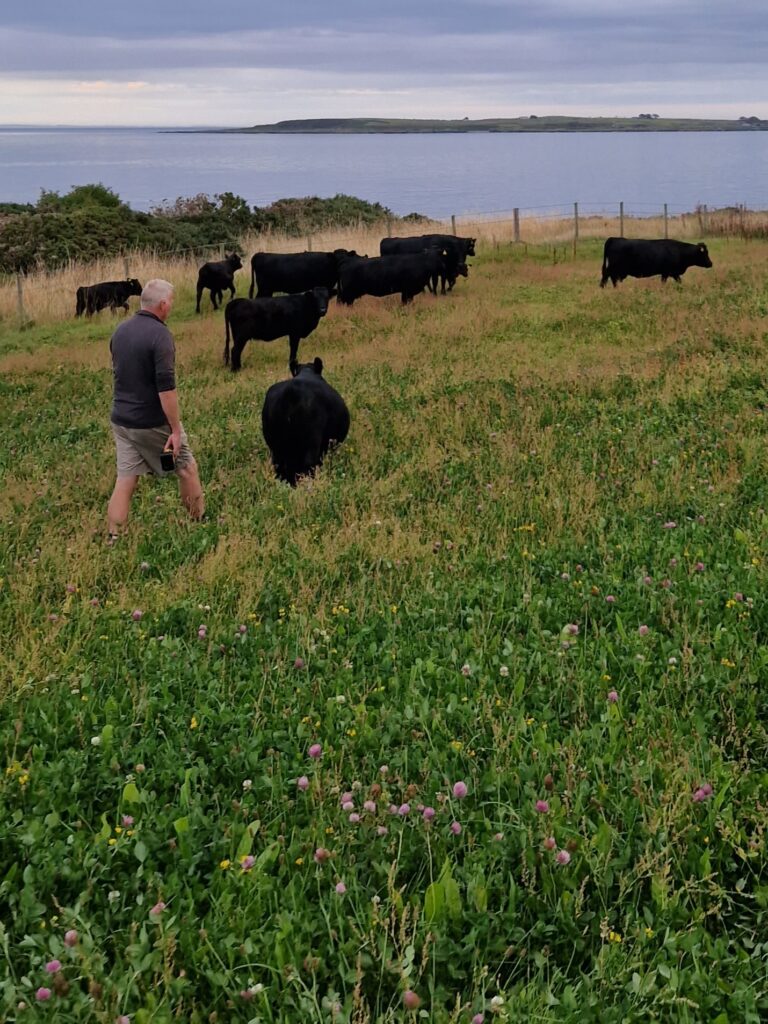
The herd on the Ards Peninsula
There was an area of 10 acres of cover crop intended for the feeding and encouragement of birdlife. The cover crop did this quite successfully however when the crop had come to the end of its effectiveness, we decided to plant a multi species/herbal ley. We were advised on this matter by a friend and ecologist who assists us, Dr Réamaí Mathers. Instead of spraying the residual crop and ploughing it back into the soil we decided we would overwinter the Dexter cattle on the ground, letting them forage the remaining digestible plant life and help prepare the seedbed by trampling and opening the soil surface. This worked extremely well and in early spring we simply disced the ground giving it a light power harrowing, which was our version of minimum till which helped facilitate carbon sequestration. We then sowed the species rich ley which included ryegrasses, timothy, meadow fescue, white clover, red clover and ribwort plantain. This has proved very successful and is lasting well with the correct grazing management which may involve increasing or decreasing paddock sizes and stocking rates dependent on weather and growth conditions. This diverse sward is also high in flowering plants which support a wide range of invertebrates and pollinators frequently observed and photographed on the farm.
Overtime we have seen a huge increase in birdlife including Sparrow Hawks, Yellow Hammers, Buzzards, Kestrels, Lapwing, Pink Foot Geese, Greylag Geese, Barnacle Geese, Egrets, Hooper Swans, Grey Heron, Teal, Widgen, Pin Tail and other shoreline birds. There is also a large visiting Curlew population. We also see the arrival of Brent Geese in late September. As we do not use pesticides, herbicides, slurries or synthetic fertiliser we have stopped the leaching of chemicals into ponds and ditches as well as Strangford Lough itself from the farm. This can only benefit these geese who graze on the Eel Grass that is abundant in the Lough. By improving the water quality we have seen a return of wide variety of pond and waterway life including frogs and newts. Other wildlife seen on the farm includes otters, badgers, foxes, rabbits and Irish Hares.
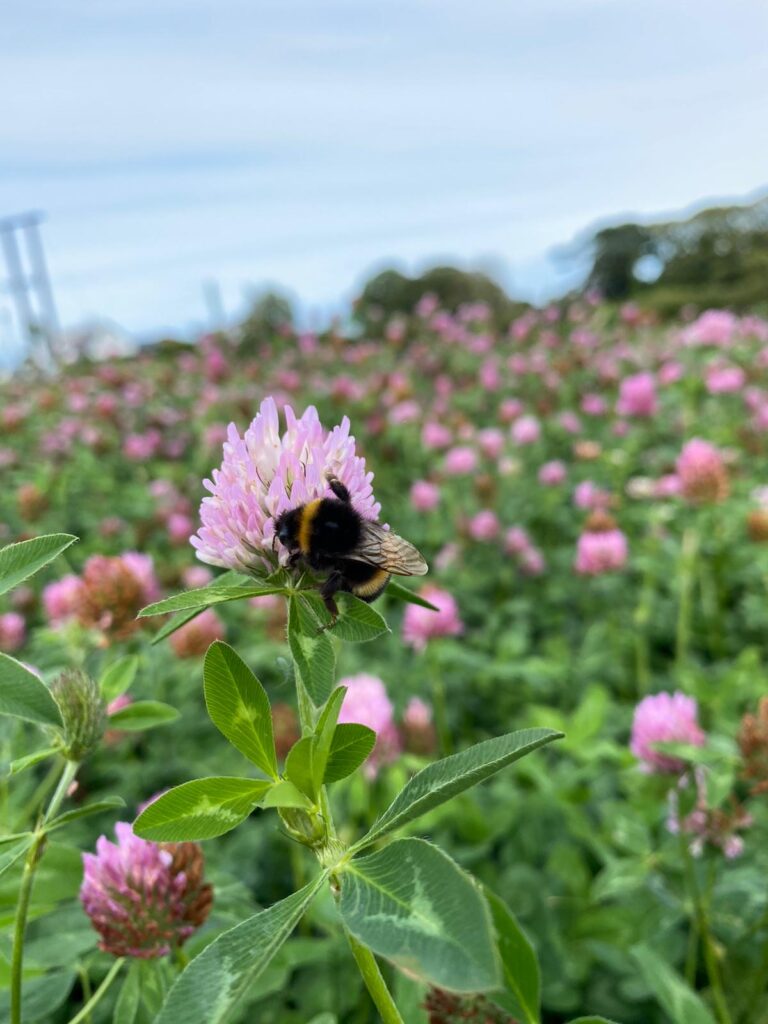
Pollinators visit their clover-rich fields



